Derinkuyu Underground City
Cappadocia, Turkeyis home to a subterranean network of dwellings, this article provides a background and history to a network that dates back to 15th century BCE. An Antipodean travel company serving World Travellers since 1983 with small group educational tours for senior couples and mature solo travellers.
2 Apr 24 · 8 mins read
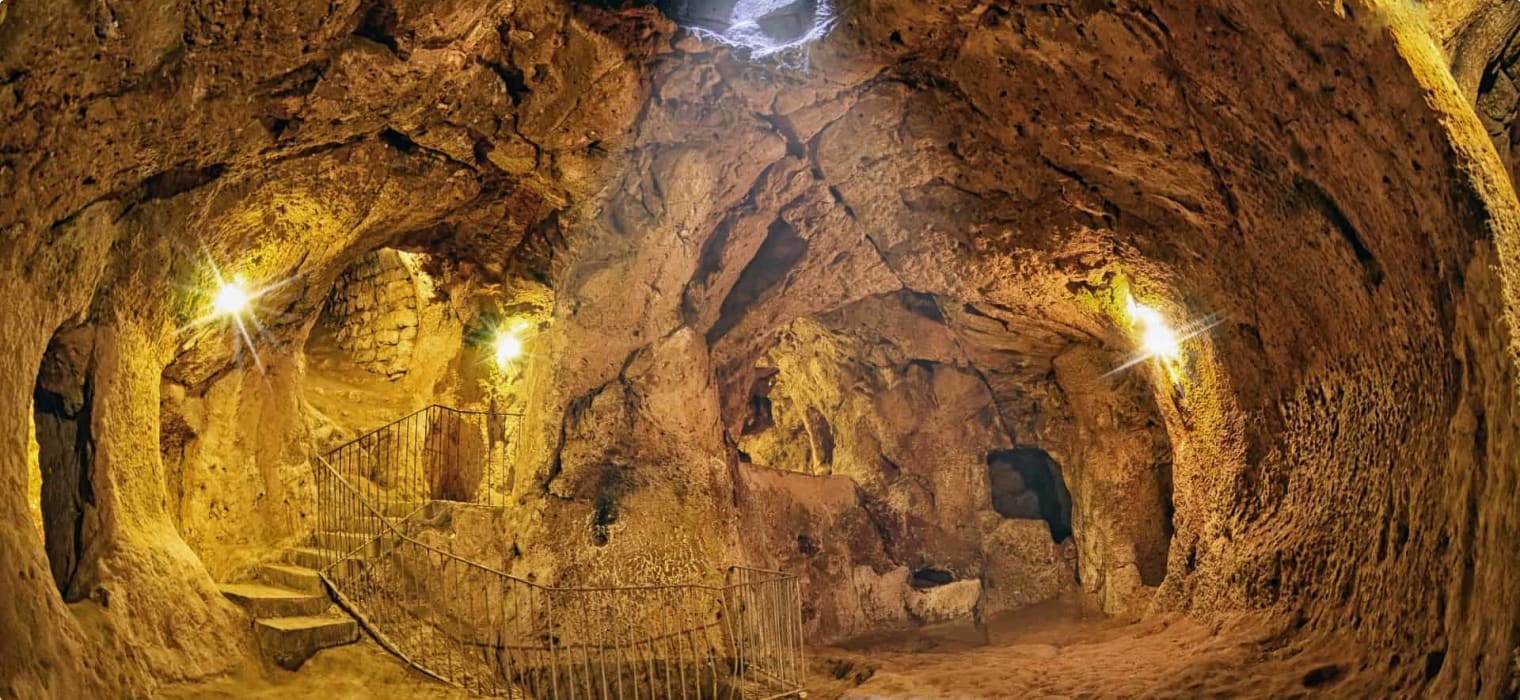
The Ancient Underground City of Derinkuyu
The Derinkuyu underground city is a massive subterranean network of caves and underground dwellings located in the Derinkuyu district of Nevşehir Province in Cappadocia Turkey. The caves may have first been excavated by the Anatolian Hittites in ancient times as far back as the 15th century BCE, but the bulk of the city was most likely constructed by the Phrygians in the 8th century BCE. It was then later during the time of the Byzantine Empire that the underground city saw its most significant expansion, with the city eventually large enough to shelter 20,000 people, as well as having additional room for food stores and livestock. The city extensively developed, descending 18 stories below ground and featured storerooms, kitchens, cellars, chapels, and even a winery.
As the Christian Byzantine Empire found itself beset with invasions from Muslim powers over the centuries, the local inhabitants of Derinkuyu used the subterranean city as a place of shelter during these times of war and conflict. Eventually the tunnels were abandoned as the Christian population of Derinkuyu moved out of the area – however, the city still remains as a reminder of the ingenuity of its former inhabitants. No other place in the world is as deep or extensive.
This article explores the history and features of Derinkuyu. It is written as part of Odyssey Traveller’s series on lost ancient cities, with information drawn from Philip Matyszak’s Lost Cities of the Ancient World. The information is intended as background reading for our 21-day Small Group Tour of Ancient Turkey for mature and senior travellers. During this tour, we travel from Istanbul to Cappadocia, visiting some of the most spectacular, varied, and historically important sites in the ancient world. Read on for more information about Derinkuyu and the tour!
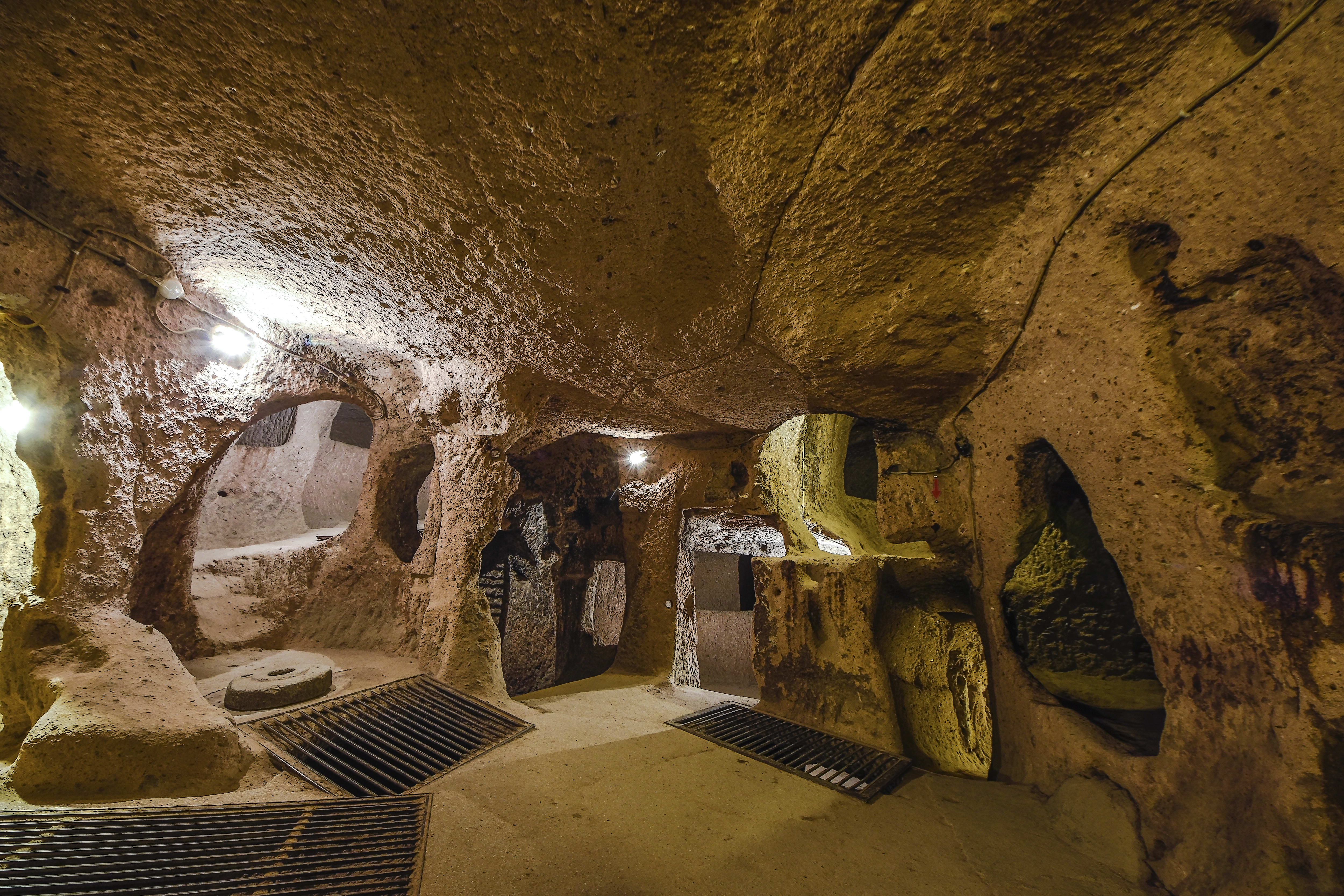
Origins of Derinkuyu
The story of Derinkuyu begins several million years ago when ash from a series of volcanic eruptions covered the landscape. This volcanic ash formed a type of deposit called tuff. The fascinating thing about tuff is that it is as easy to excavate as loam, but after being exposed to oxygen, tuff lithifies – which means that it turns as solid as stone. So, people can dig through it easily, but end up with a tunnel as firm as if they had dug through bedrock.
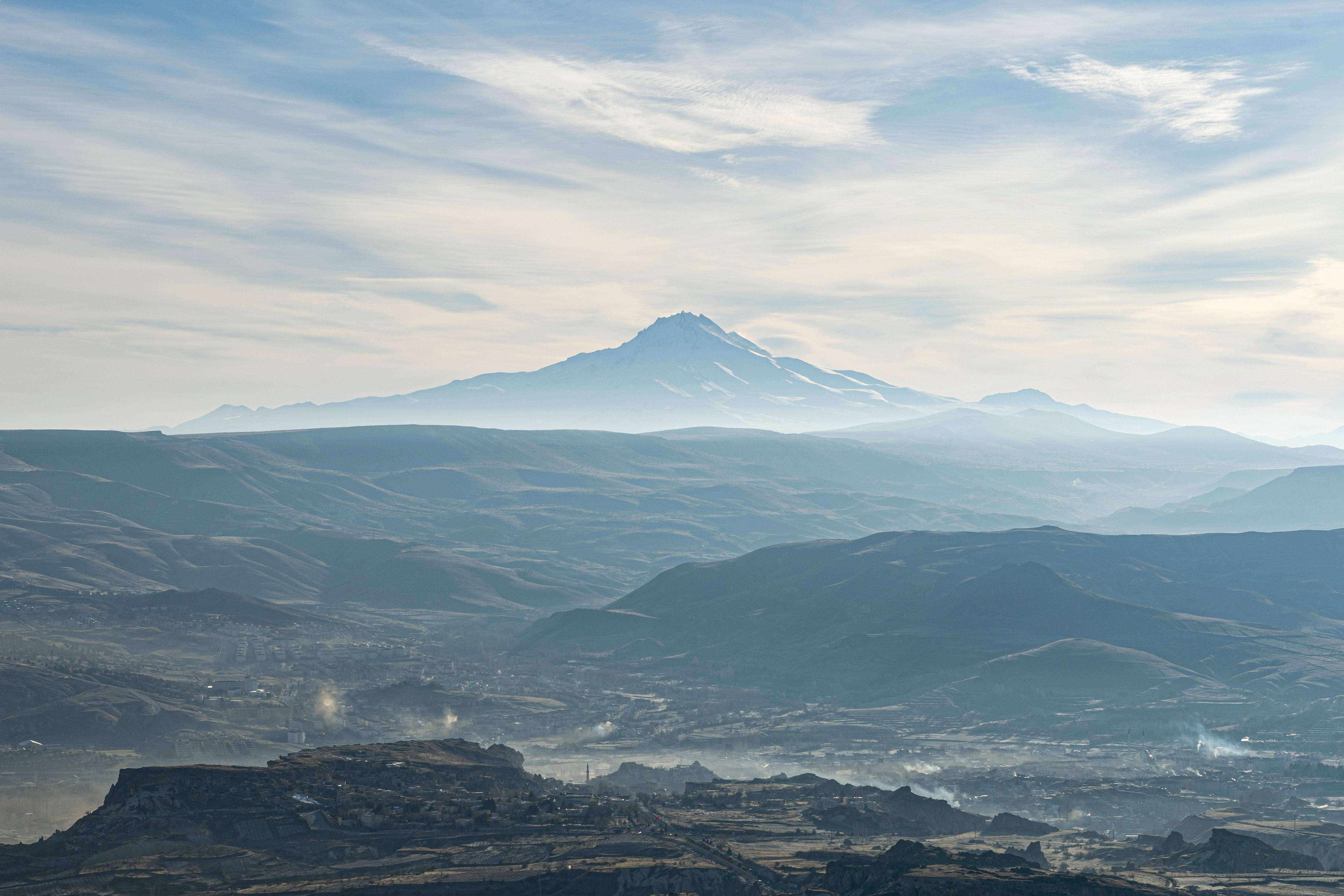
It remains a mystery who the first people were to take advantage of the landscape’s soft volcanic rock to build the sprawling network of subterranean caves that is the underground city Derinkuyu. Some archaeologists speculate that the very earliest chambers here were excavated by the Hittites, who dominated the region around 2,000 BCE, as a way to escape their enemies. Hittite artefacts found inside Derinkuyu add weight to this theory.
Even so, whether the Hittites were the first to lay the foundation for the city or not, it was most likely an Indo-European people known as the Phrygians who built the bulk of the city. Living in the area in the eighth century BCE, these people, notable as skilled Iron-age architects, would have had the means to construct the city’s elaborate underground facilities.
What is certain is that the original underground rooms were added to, generation after generation, until the entire underground secret city was completed in the Byzantine era of the eighth century CE. From this point on into the Arab-Byzantine wars (780-1180 CE), the city was heavily used as protection from Arab Muslims. The Byzantines expanded the city’s caverns to deep multiple-level structures and added chapels and Greek inscriptions. The population of the city in the meantime swelled to its peak of nearly 20,000 residents.
Fortress City
A subject of controversy is whether the inhabitants of Derinkuyu were true troglodytes or whether Derinkuyu was an underground fortress used only in times of crisis. Until the city has been fully explored (and it is so massive that, so far, archaeologists have worked their way through less than half of it) this question will not be fully resolved, though for the present the ‘fortress city’ hypothesis dominates academic thinking.
Undoubtedly Derinkuyu was built with defence in mind. Its doors were made of heavy solid stone, half a metre (2 feet) thick, in the shape of giant wheels. They were rolled into place into a slot across the entrance, effectively making that entrance as solid as the walls alongside, and so blocking off the passageways.
Were attackers able to batter through these doors, they would have been unable to march in formation, proceeding rather at a crouch, in single file, through low-ceilinged, narrow tunnels. They would eventually emerge one by one into a higher-roofed room, where a well-armed reception committee would be standing upright to meet them. (Several rooms have been located that might have served as armouries.) All the while, the invaders would have had difficulty seeing due to the dim lighting, while those living in the underground city would have been more used to the darkness.
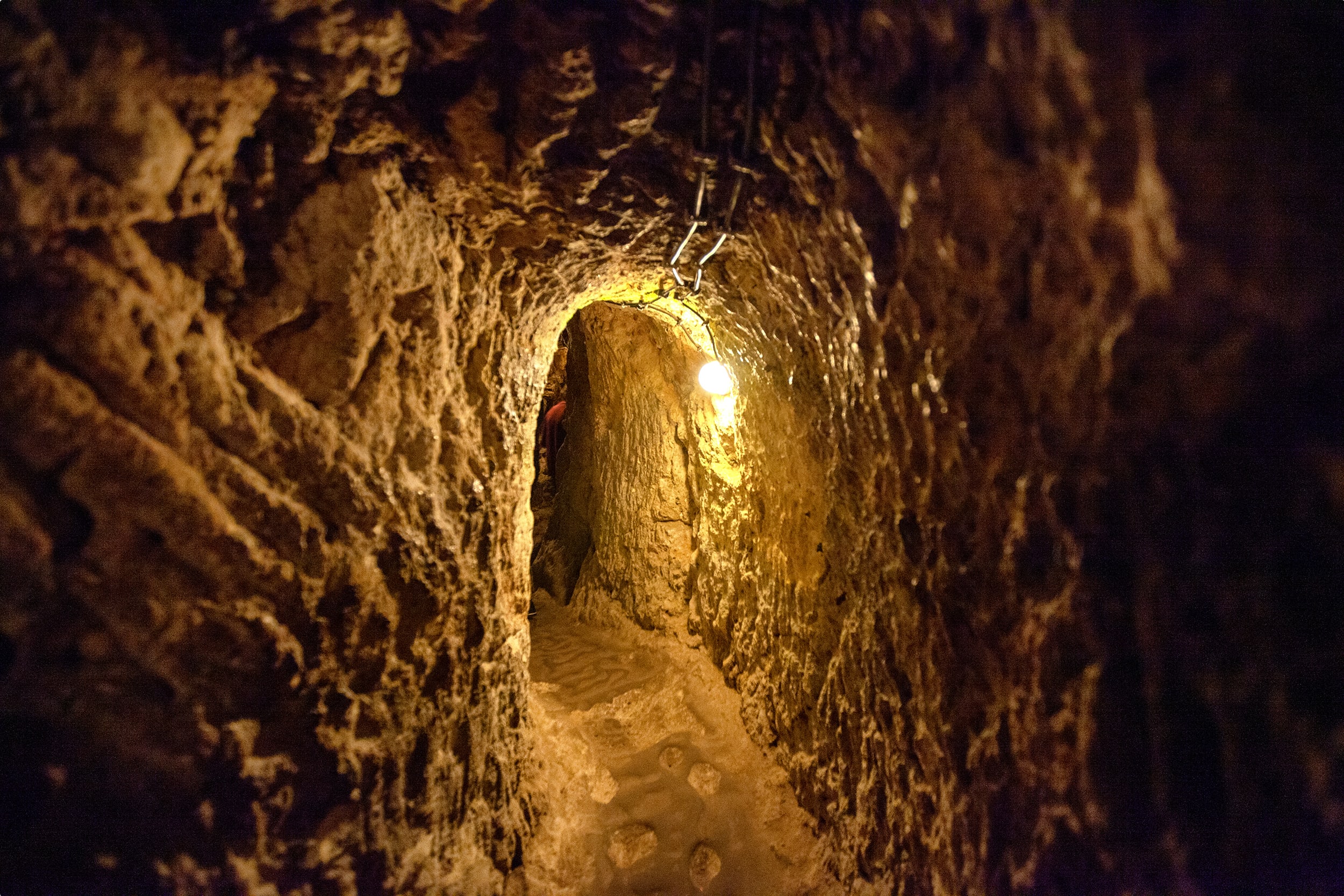
Even if attackers managed to navigate the confusing maze of tunnels – some of which had dead ends – and capture a level, the defenders could retreat to a similarly fortified lower level and do it all over again.
With all its defences, there aren’t even any indications that invaders ever managed to discover Derinkuyu, let alone capture it. During the wars between the Byzantines and the Arabs, the Mongol raids of the 14th century, and after the region was conquered by the Ottoman Turks, the underground city continued to serve successfully as a place of refuge for the local population.
Derinkuyu’s Features

The advantage of taking several thousand years to construct an underground refuge is that there is plenty of time to correct mistakes and add amenities. Each level became carefully engineered for specific uses. The upper levels were used as living and sleeping quarters, while the lower levels were used mainly for storage.
An impressive, carefully designed ventilation system of fifty-two major air shafts and numerous minor vents supplied the entire city with fresh air, even at the deepest levels. Some shafts went even deeper, doubling as wells, providing water to both the villagers above and those below when gone into hiding. Some wells were also dug to be accessible only within the underground city, in case an attacker might poison the others. Other vertical shafts, meanwhile, were designed to take care of sewage.
All types of goods were stored at Derinkuyu. Conditions were excellent for the long-term storage of grain. Olive and wine presses stored in the caverns show that at least some of the harvest might have been kept safely underground for processing. There were also several underground bakeries to make sure that the inhabitants had a regular supply of fresh bread.
Other underground rooms served as stables for livestock. These were located nearest to the surface to avoid the smell and toxic gases produced by the cattle. The livestock also provided a layer of living insulation, helping to keep the city warm during the colder months. Doubtless some storage rooms also contained large bales of hay.
Derinkuyu also contained a convent and numerous small churches. The most famous is the cruciform church carved directly into the rock on the seventh level. It has been speculated, meanwhile, that one particularly large underground space served as a religious school or meeting place, with small rooms set into the main hall that might have been offices or studies.
With all these specialised rooms, it seems the local could live here in as much a fulfilling manner as they did above. Rather than using it merely a temporary shelter, those who dwelled within the underground settlement were prepared to spend months, or even years, inside.
Forgotten Derinkuyu
As late as the 1910s and 1920s, the local Cappadocian Greeks were still using Derinkuyu’s tunnels to escape periods of persecution. Then in 1923, the Cappadocian Greeks were evacuated during a population exchange between Greece and Turkey, and the last users quietly sealed the entrances before departing. They did so without telling the new occupants of the site what lay beneath.
Thereafter, the hidden city of Derinkuyu slumbered undisturbed until in 1963 one of the secret entrances fell into the hands of an ambitious home improver. During renovations, the man took a sledgehammer to a wall in his basement and was surprised to find a hidden room behind it. Further digging then revealed access to the entire tunnel network o Derinkuyu. This would be the first of more than 600 entrances found within private homes leading to the subterrestrial city.
Derinkuyu Today
Since 1969, parts of Derinkuyu have been open to the public, with about 10% of the underground city currently accessible to tourists (the rest is still being explored). Trips underground are strictly supervised, since there is a real danger that any straying tourist might not be seen again for a long time.
Tourist trips are often arranged from Göreme, a town some 30 kilometres (18½ miles) away, allowing travellers to enjoy the excellent scenery along the route. Being completely weatherproof, the caverns are open all year round, though the opening times differ in summer and winter.
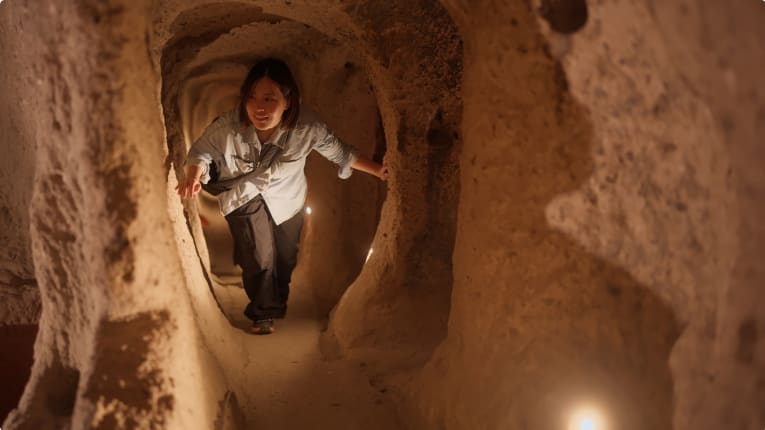
What’s more, Derinkuyu is not the only underground city in Cappadocia! The region is host to 200 and counting subterranean dwellings, including more than 40 which are three or more levels deep. Many are even connected to Derinkuyu via carefully dug tunnels, with some as long as 9km.
For now, none as large as Derinkuyu have been discovered. Very recently though another set of hidden tunnels has been found beneath a castle in the same province. And some excited archaeologists reckon that this hidden city, revealed by work on a housing project, may be even larger than Derinkuyu.
Tour of Turkey
You can visit ancient Turkish sites in the Cappadocia region on Odyssey Traveller’s 18-day our 21-day Small Group Tour of Ancient Turkey. This tour, designed especially for mature-aged and senior travellers, focuses on the history and culture of ancient Turkey.
Over 21 days we will travel from Istanbul to Cappadocia, exploring and learning with our tour leader and tour guide about the ancient world through to the Ottoman empire and the power of the Ottoman Sultan in building some of the greatest monuments. On our Cappadocia tour we visit its ‘fairy chimneys’ – large rock spires that rise from the earth like mushrooms, formed over millions of years by the erosion of volcanic rock. We go on a Pamukkale tour, see the ancient ruins of Ephesus and the mosques in Turkey , and view the Aegean Sea, with our terrific local guide sharing with you both the ancient and contemporary history and scenery of this incredibly diverse nation. In all, the tour stops in nine key places that have played pivotal roles in the development of Turkey including the Gallipoli peninsula.
Typically, our Turkey travel group stop for more than one night in our destinations–1 to 4 nights of hotel stay or other type of accommodation before travelling to our next point of interest. A combination of day trip, city tour, shore excursions, and overnight trips, this Turkey tour promises to be a memorable trip and an amazing travel experience.
Odyssey Traveller has been serving global travellers since 1983 with educational tours of the history, culture, and architecture of our destinations designed for mature and senior travellers. We specialise in offering small group tours partnering with a local tour guide at each destination to provide a relaxed and comfortable pace and atmosphere that sets us apart from larger tour groups. Tours consist of small groups of between 6 and 12 people and are cost inclusive of all entrances, tipping and majority of meals. For more information, click here, and head to this page to make a booking.
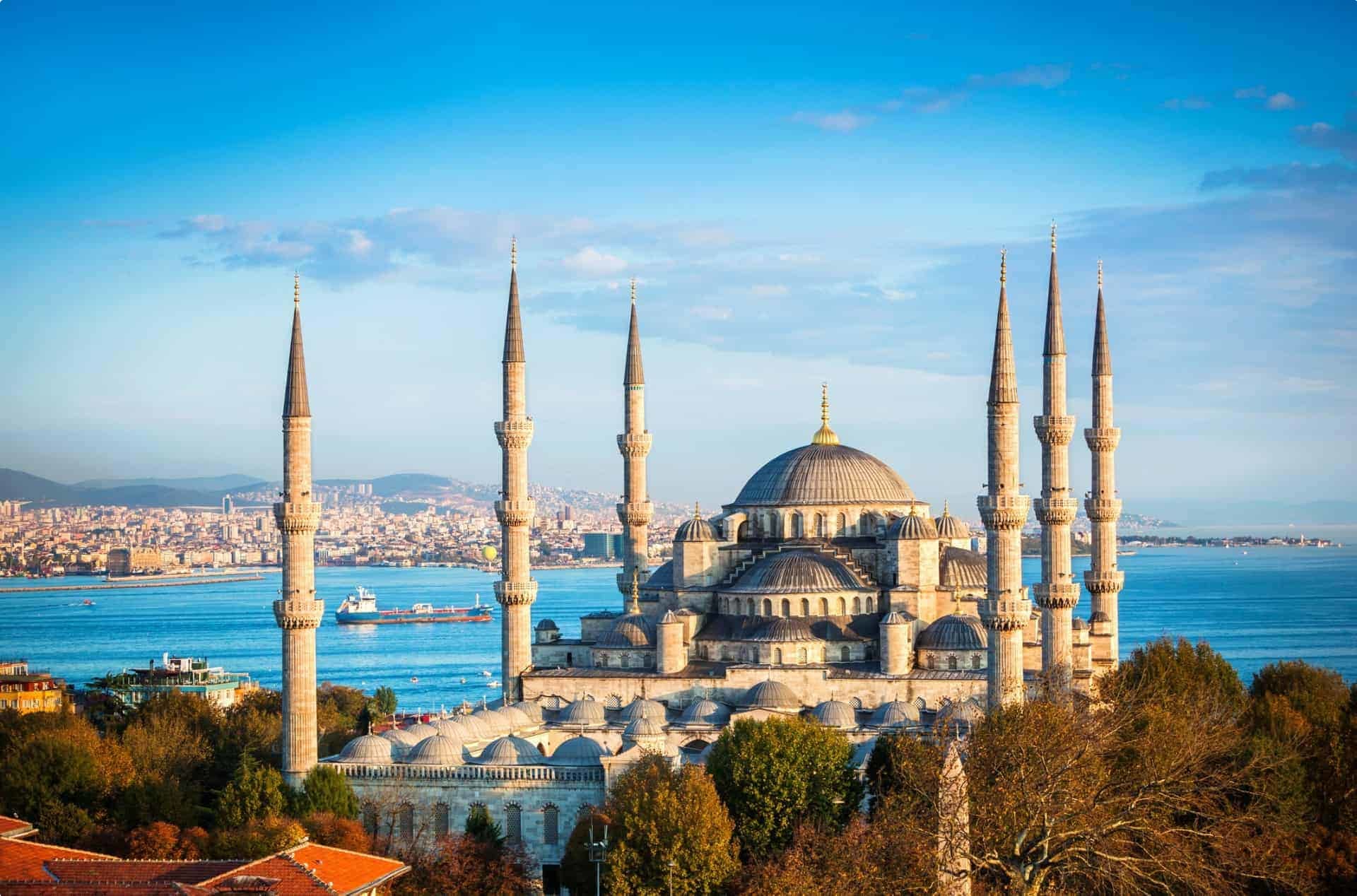
Articles about Turkey published by Odyssey Traveller.
- Treasures of the Ottoman Empire
- Turkey: From Anatolia to the Ottoman Empire
- Ten Unimaginable Destinations
- Ten Books for Travellers to Turkey
- Ten Things to See in Turkey
For all the articles Odyssey Traveller has published for mature aged and senior travellers, click through on this link.
External articles to assist you on your visit to Turkey.
- What to see in Turkey in 5 days? (Holidayme.com)
- How to spend 3 days in Turkey (Drifter Planet)
- 10 Days in Turkey: A Travel Itinerary (Map and Magnets)
- Mosaic Art in Ephesus
- How to travel from Istanbul to Cappadocia (Turkey Travel Planner)
Related Tours
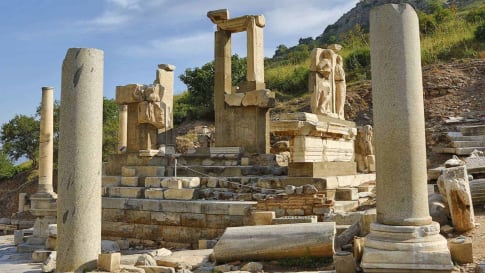
21 days
Aug, AprSmall group tour of Ancient Turkey
Visiting Turkey
As a travel company we seek to keep guests off the beaten path. Trips that are remembered for authentic experiences. Our small group journeys in Turkey are fully escorted by an experienced local guide and an Odyssey guide to give this type of experience whether at one of the many UNESCO World heritage sites explored or local bazaars. It is always about the adventure and memories that we will create.
From A$17,295 AUD
View Tour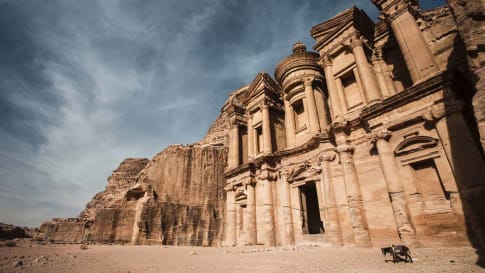
9 days
Jan, OctAncient History of Jordan | Escorted Small Group Tour
Visiting Jordan
Explore Jordan, visiting its capital city, Amman Jordan, the ancient Desert Castles, Petra and the Dead Sea on a small group package tour for mature and senior travellers travelling as a couple or Solo.
From A$6,750 AUD
View Tour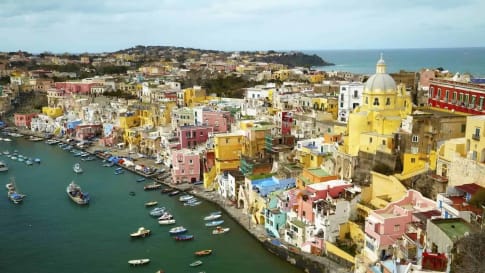
22 days
Jan, Apr, SepAncient History of Southern Italy & Sicily group tours
Visiting Italy
Our program for senior travellers, as well as featuring the rugged countryside of Southern Italy, also encompasses learning about the many civilisations that have shaped this land. We learn about the influence of the early Phoenicians, Greeks, Romans, Byzantines, Saracens, and Aragonese.
From A$16,995 AUD
View Tour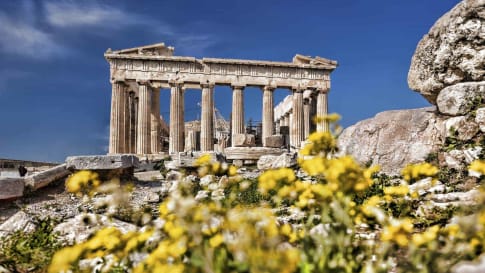
22 days
Apr, Sep, MayGreece small group escorted history tour
Visiting Greece
Our 22 day small group tour explores the land of great philosophers, myths, and legends. We will learn about the culture and heritage of modern Greece whilst exploring and learning Athens, which only found independence in its uprising from the Ottoman Empire in the 19th century.
From A$14,145 AUD
View Tour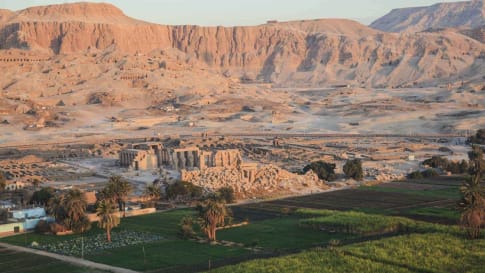
18 days
Jan, NovEgypt tour: escorted small group history & cultural tour of Egypt
Visiting Egypt
Our small group program for senior and mature couples and solo travelers takes us to contemporary feats such as the Aswan Dam and also to current crucibles of the Egyptian experience such as Tahrir Square. Proof, were it needed, that Egypt’s role as the pivot of civilisation is far from ended. There is the opportunity to visit our Morocco, Jordan or Iran tours before embarking on this tour of Egypt.
From A$12,950 AUD
View Tour
